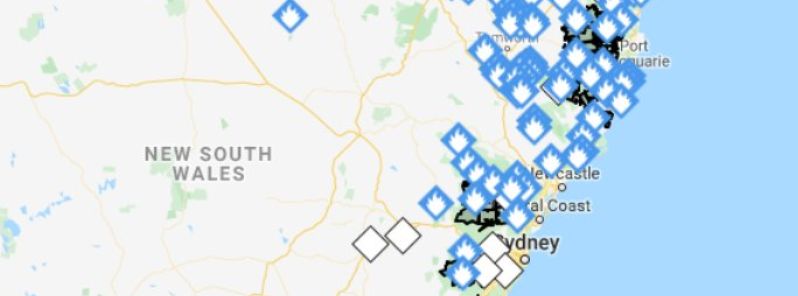Firefighters conduct back burning ahead of aggravating weather in New South Wales, Australia

Firefighters took advantage of cooler temperature prior to the worsening weather forecast next week by conducting critical backburning across New South Wales, Australia, where blazes are still burning across over 2.2 million ha (5.4 million acres) on Friday, December 13, 2019.
As of 09:30 UTC (20:30 LT) on Friday, 59 fires have yet to be contained out of 110 burning across NSW.
The NSW Rural Fire Service said conditions are expected to aggravate in the following week and maximum temperatures are forecast in areas Dubbo, Orange, Mudgee, Moree, Bourke, Parkes, and Penrith.
Authorities have advised people to stay vigilant about their health as poor air quality remains in parts of Sydney, and it may continue to worsen.
According to NSW Health's Dr. Richard Broome, Sydney's air quality had improved in the past days, but residents still have to monitor the conditions and take precautions when smoke returned.
Firefighters are taking advantage of more favourable weather to conduct a number of backburns on firegrounds across the state. More than 117 fires continue to burn of which at least 70 are yet to be contained. #NSWRFS pic.twitter.com/HxK6EIBsHP
— NSW RFS (@NSWRFS) December 12, 2019
At 8:30pm more than 1,900 personnel continue to work on the 110 fires burning across NSW, 59 not yet contained. Overnight, crews will continue to strengthen containment lines and conduct backburning where conditions allow. Smoke will be visible in a number of areas. #NSWRFS pic.twitter.com/HCck2M5rn7
— NSW RFS (@NSWRFS) December 13, 2019
Current conditions have allowed firefighters to conduct important backburning operations across many firegrounds this week, before deteriorating weather again next week.#NSWRFS #NSWFires
Photo credit: Wolter Peters pic.twitter.com/GyZplNPRTX
— NSW RFS (@NSWRFS) December 12, 2019
"People with heart and lung conditions, young children and pregnant women may be more sensitive to smoke," Broome said in a statement. "I'd urge these groups to avoid vigorous outdoor activity on smoky days."
Emergency departments received higher than usual calls for ambulance assistance regarding breathing problems. There were 1 357 relevant emergency department presentations between December 5 to 11, compared to the five-year average of 916.
Broome added that while smoke might cause no more than eye or throat irritation for most, those with respiratory ailments needed to be cautious.
Fire danger will be very high in some portions of NSW on Saturday, including the central ranges, Greater Hunter, northwest, southern ranges, and northern slopes.
This week, fires have destroyed 724 homes, 49 facilities, 1 582 outbuildings. It also killed six people and scorched 2.7 million ha (6.7 million acres).
Featured image credit: NSW RFS

Commenting rules and guidelines
We value the thoughts and opinions of our readers and welcome healthy discussions on our website. In order to maintain a respectful and positive community, we ask that all commenters follow these rules.